Welcome back to our conservation curiosities series where we look into some of the more unusual and interesting items that come into our studio. Today we are going to explore the history and care of the jardinière, a popular and practical antique that is much admired by collectors and gardeners around the world.
 Above: a selection of antique ceramic jardinières
Above: a selection of antique ceramic jardinières
What is a jardinière?
The jardinière was created to add decorative flair to potted plants in the garden or greenhouse. This was especially popular following the Great Exhibition of 1851 which showcased many forms of jardinière within the Crystal Palace.
The word jardinière is French for ‘female gardener’ though the term itself (when referring to plant pots) is used primarily by English speakers. You may also find smaller styles rereferred to as cachepots.
 Above: three ceramic jardinière from Staffordshire (1760), De Metaale (1691-1724), and Minton (1874)
Above: three ceramic jardinière from Staffordshire (1760), De Metaale (1691-1724), and Minton (1874)
Traditional terracotta pots had been used for centuries, but porous surfaces attracted issues such as weed growth, embedded dirt and deterioration from soluble salts. Jardinière were intended to be glazed, preventing these time consuming problems from arising.
The fine artistry, low maintenance and luxurious expense of well made jardinière made gardening feel less of a menial task, attracting new hobbyists from the upper and middle classes throughout the 19th century.
 Above: jardinières can be found in various shapes, sizes and materials including wood, gilt bronze, ceramics and glass
Above: jardinières can be found in various shapes, sizes and materials including wood, gilt bronze, ceramics and glass
Jardinière history
Although they were highly popular throughout the Victorian era, jardinière examples date back hundreds of years. In the 16th century, many craftsmen were trying and failing to recreate the hard paste porcelain produced in China, as seen in the Delftware examples below.
 Above: three Dutch designs inspired by the colour palette and motifs of Chinese porcelain – pair on the far left and right from 1730-70, centre from 1680-85
Above: three Dutch designs inspired by the colour palette and motifs of Chinese porcelain – pair on the far left and right from 1730-70, centre from 1680-85
Bernard Palissy attempted this experimentation for sixteen years before inventing a different type of glazed rustic ware – sturdy and perfect for outdoor use. He was discovered by Catherine de Medici, who appointed him ‘the king’s inventor of rustic figurines’ due to his fine work at the Tuileries garden. Unfortunately, Palissy was caught up in the ongoing war of French religion and died in a Bastille dungeon in 1590.
 Above: an Asian inspired maiolica jardinière by Minton, 1883
Above: an Asian inspired maiolica jardinière by Minton, 1883
Bernard Palissy was not forgotten – at the Great Exhibition, Minton debuted their own ‘Palissy wares’ and Doulton produced their own faience style jardinières, suitable for grand conservatories.
 Above: maiolica jardinières by Minton, 1860-62
Above: maiolica jardinières by Minton, 1860-62
By the turn of the century, horticulture was a popular upper class pursuit and the pottery produced was reflective of this. Art nouveau encouraged a love of natural forms and worked perfectly with abundant displays of native and exotic plants, whilst art deco celebrated modernity with linear orchids and palms.
 Above: jardinière examples from the regency period through to the turn of the 20th century
Above: jardinière examples from the regency period through to the turn of the 20th century
Today, many of the jardinière in Britain are antique – often family heirlooms or part of a well kept collection. Just as the Victorians celebrated the Medici fashions of centuries past, modern gardeners and designers use the grandeur and historic forms of jardinière to enhance and exemplify botanical features.
 Above: an art nouveau style jardiniere, early 20th century
Above: an art nouveau style jardiniere, early 20th century
Ceramic jardinière restoration and care
Although jardinière are intended to be practical, very old or weakened examples should avoid being used for potting and be kept inside. If a jardinière is still in good condition, with no exposed areas of pottery or fragile cracks and breakages, it can continue being used indoors and outdoors as a planter.
To prevent water damage and staining, we recommend that any plant housed in a jardinière has its own pot and it is removed prior to watering. Let the water drain away before returning it to the jardinière. If water builds up in a jardinière and it is kept outside, the changes in temperature may disturb the ceramic – especially if the water freezes and expands. Be mindful that although this is intended to house plants, it may still be a valuable and historically important item.
Above is a recent example of a jardinière restoration by our ceramics conservator.
If a jardinière becomes accidentally broken, collect all of the pieces – no matter how small – and contact our team for advice. The fractured pieces require a conservation level of repair to ensure a seamless result. Attempting to fix breakages at home with a regular superglue may encourage acidic decay and yellow staining. Amateur repairs can be reversed by our conservator, but this may end up being a more costly restoration due to the extra steps involved.
 Above: a selection of Dutch and Chinese examples, including a late 17th century jardiniere (centre), 17th century Dutch flower holders, and 18th century Chinese jardinieres designed for the European market
Above: a selection of Dutch and Chinese examples, including a late 17th century jardiniere (centre), 17th century Dutch flower holders, and 18th century Chinese jardinieres designed for the European market
Our ceramics conservator can work with a variety of different materials including glazed pottery. The results are often astounding when compared with the damaged condition. Restoration work covers professional cleaning, stabilisation of cracked or weakened areas, repair of broken pieces and sensitive recreation of missing areas.
How can we help?
If you have any questions about jardinière restoration, please do not hesitate to get in touch. As part of our service we offer a nationwide collection and delivery service. E-mail us via [email protected] or call 0207 112 7576 for more information.

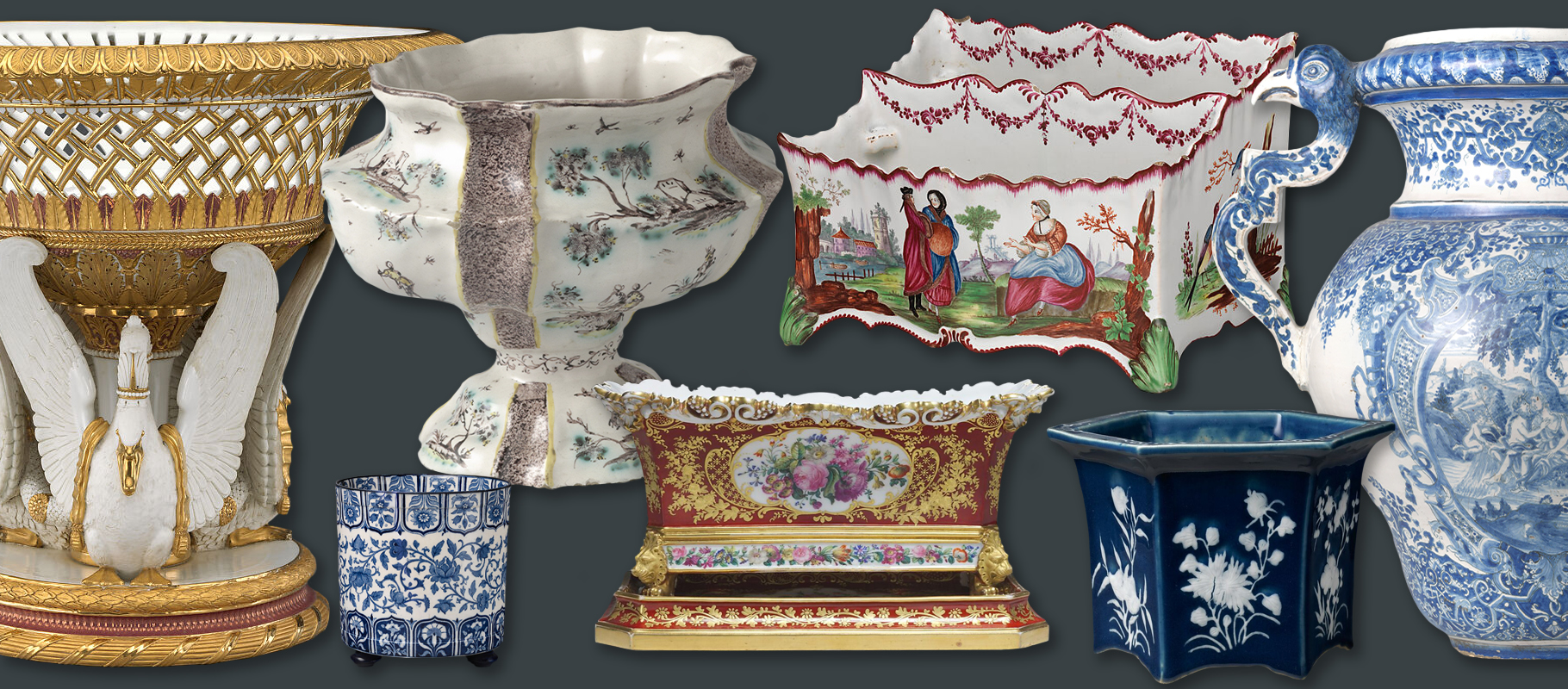 Above: a selection of antique ceramic jardinières
Above: a selection of antique ceramic jardinières Above: three ceramic jardinière from Staffordshire (1760), De Metaale (1691-1724), and Minton (1874)
Above: three ceramic jardinière from Staffordshire (1760), De Metaale (1691-1724), and Minton (1874)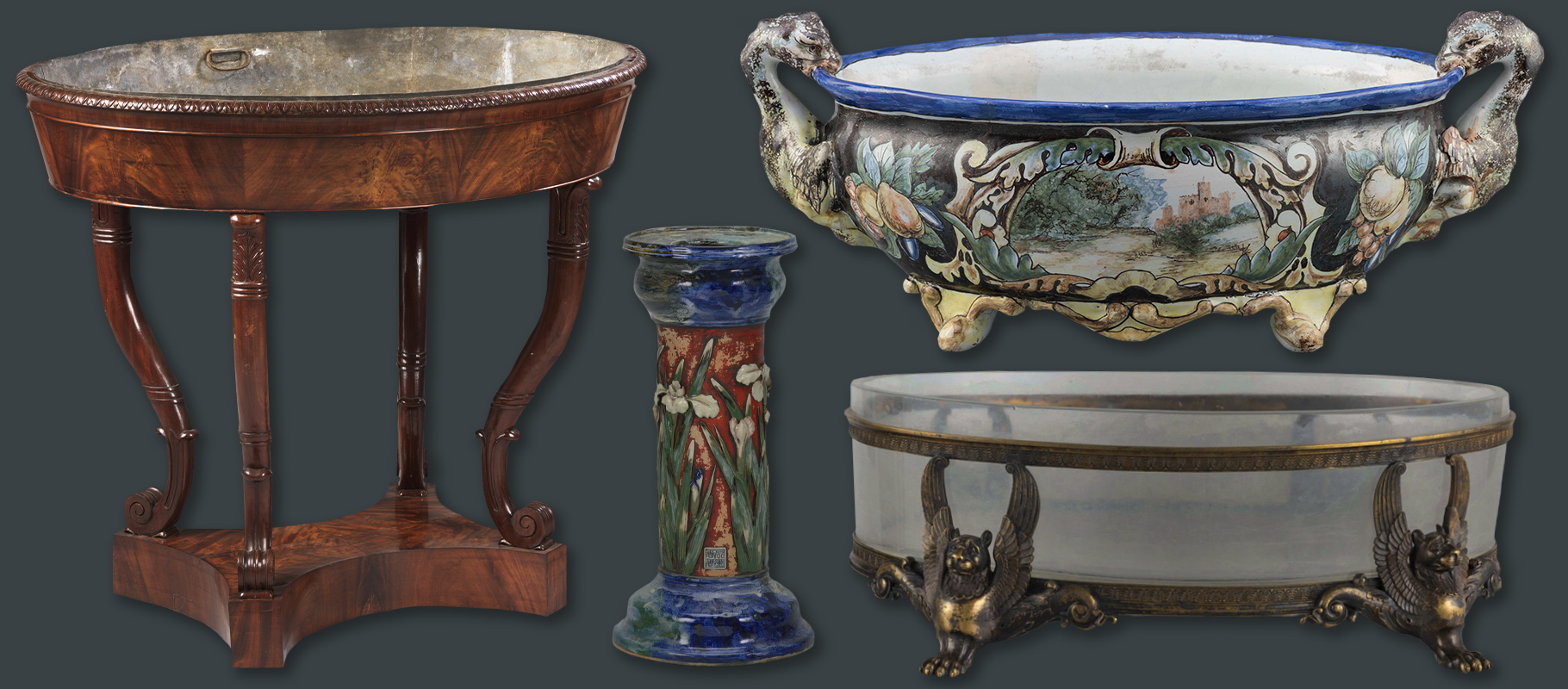 Above: jardinières can be found in various shapes, sizes and materials including wood, gilt bronze, ceramics and glass
Above: jardinières can be found in various shapes, sizes and materials including wood, gilt bronze, ceramics and glass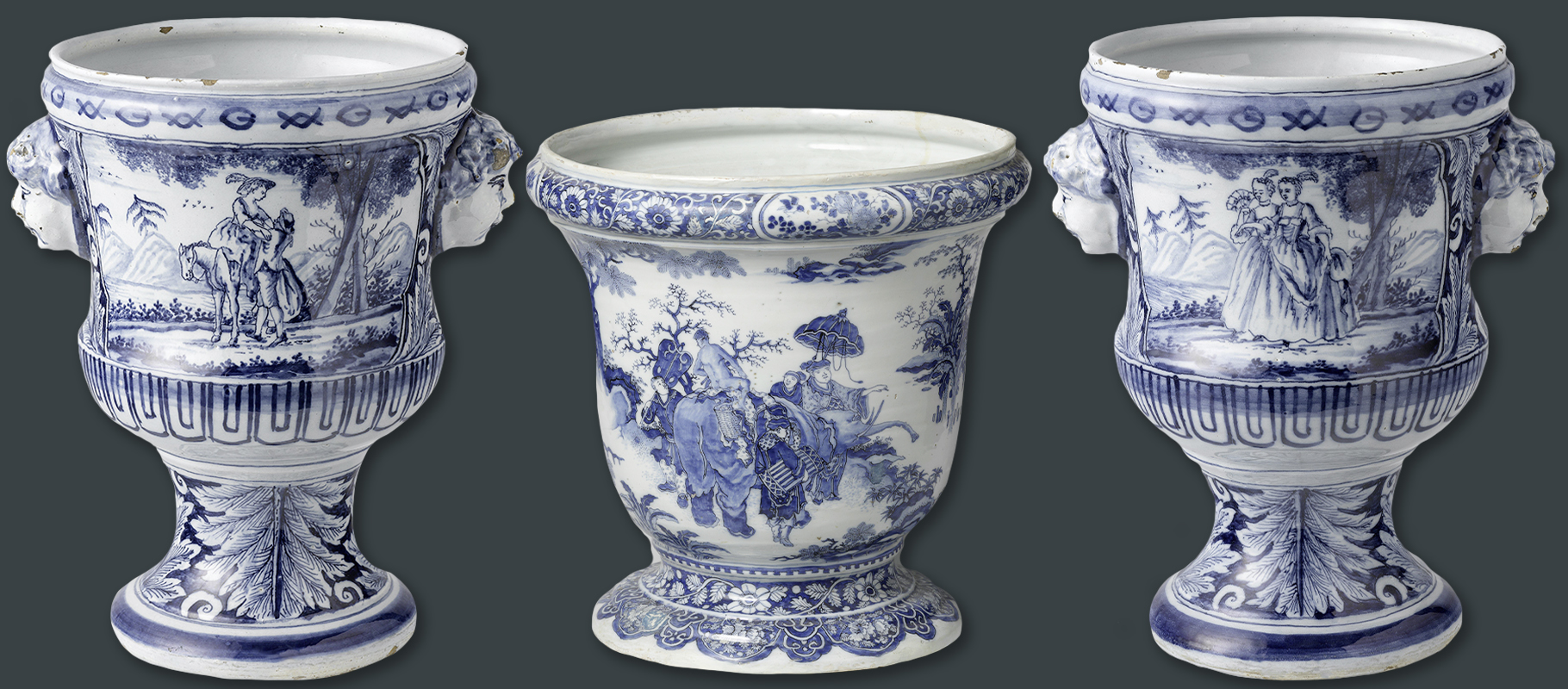 Above: three Dutch designs inspired by the colour palette and motifs of Chinese porcelain – pair on the far left and right from 1730-70, centre from 1680-85
Above: three Dutch designs inspired by the colour palette and motifs of Chinese porcelain – pair on the far left and right from 1730-70, centre from 1680-85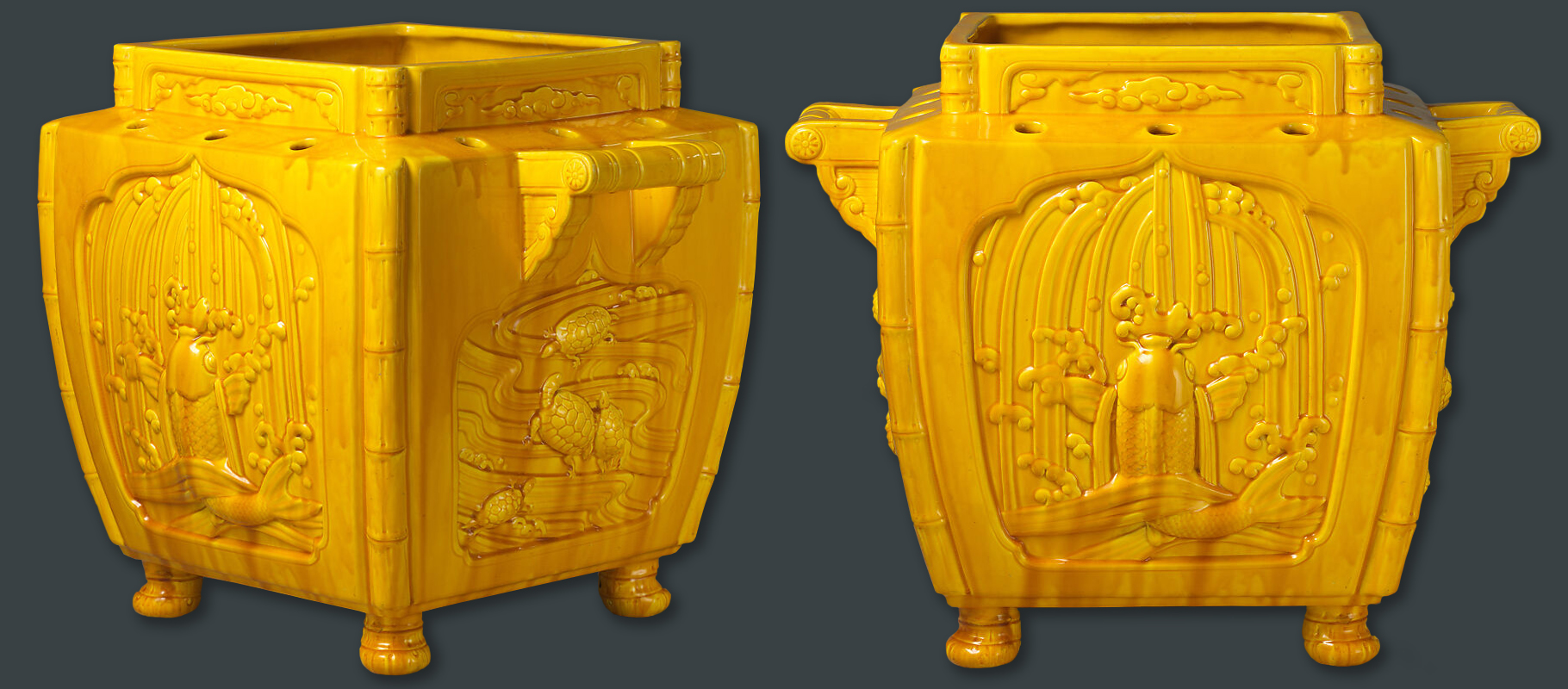 Above: an Asian inspired maiolica jardinière by Minton, 1883
Above: an Asian inspired maiolica jardinière by Minton, 1883 Above: maiolica jardinières by Minton, 1860-62
Above: maiolica jardinières by Minton, 1860-62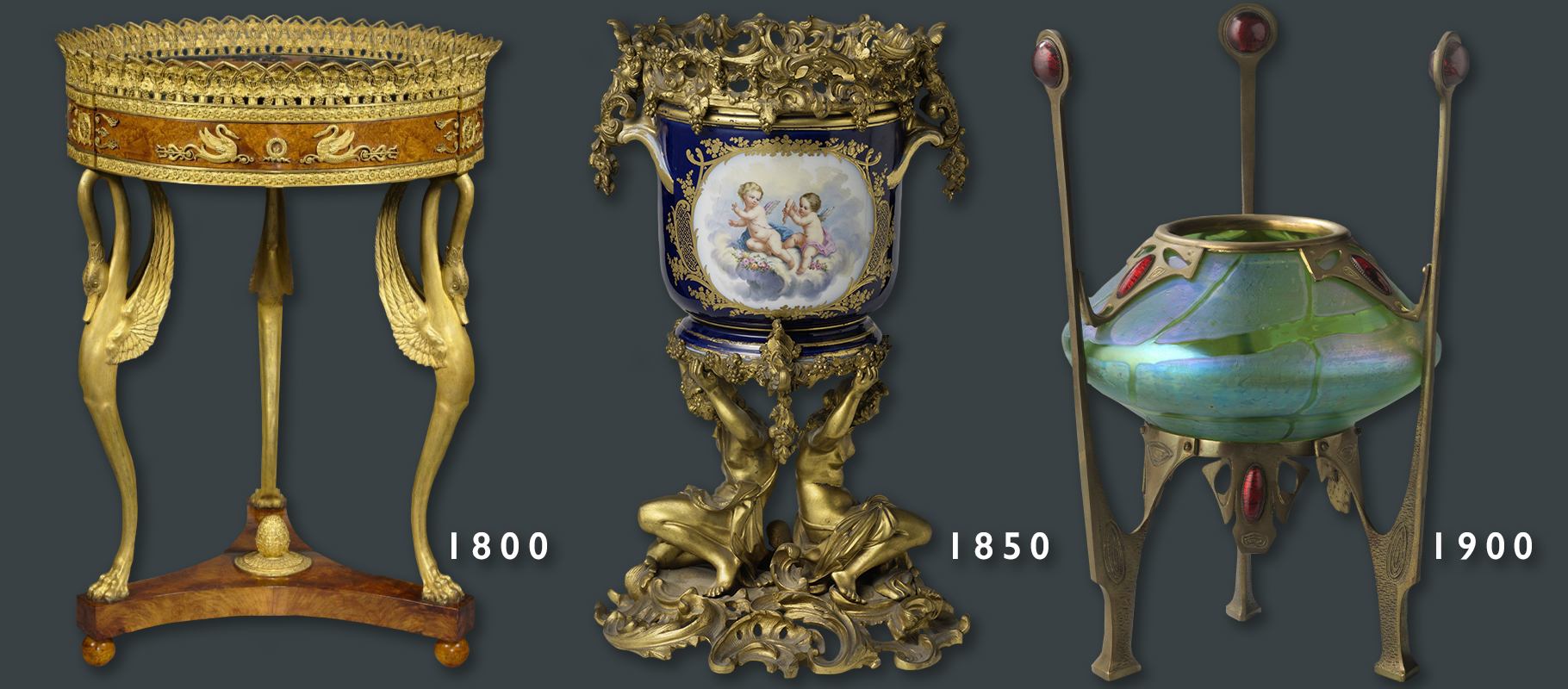 Above: jardinière examples from the regency period through to the turn of the 20th century
Above: jardinière examples from the regency period through to the turn of the 20th century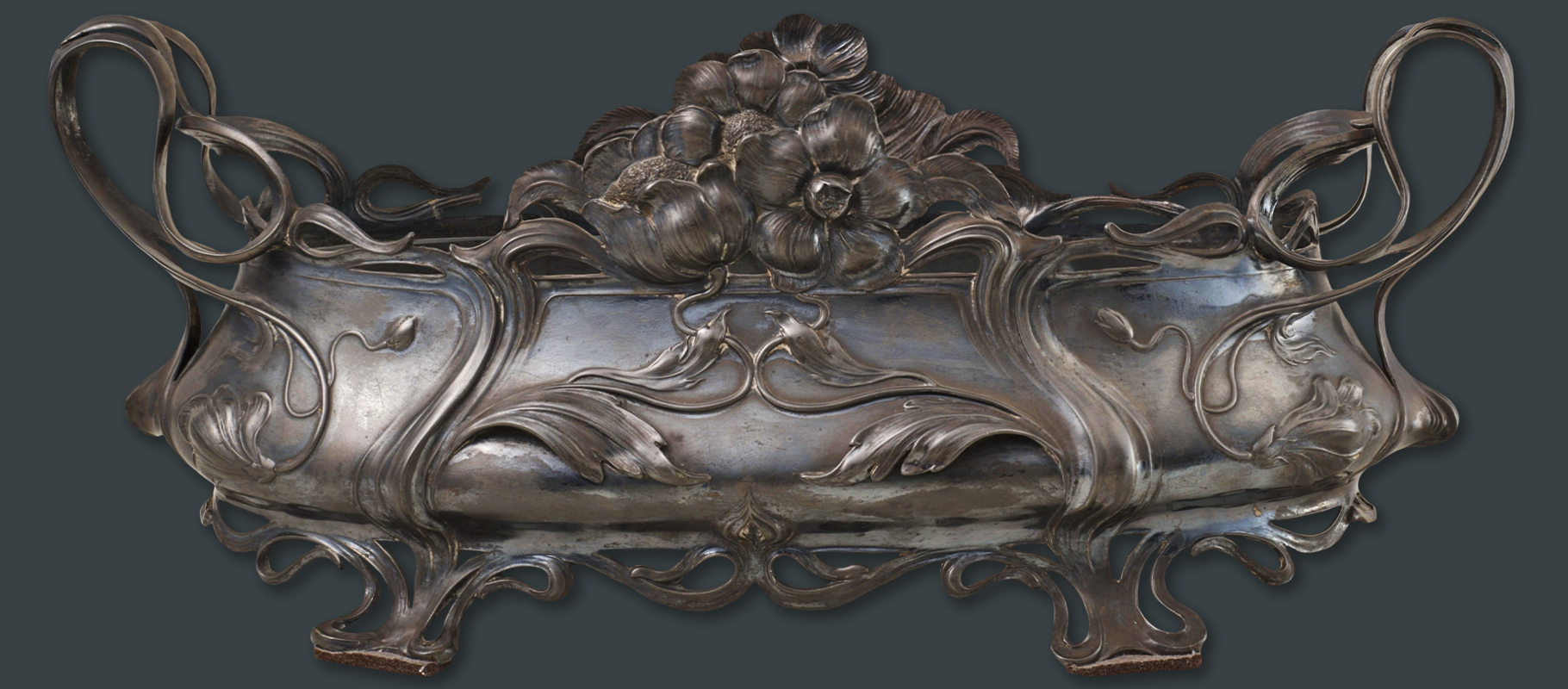 Above: an art nouveau style jardiniere, early 20th century
Above: an art nouveau style jardiniere, early 20th century
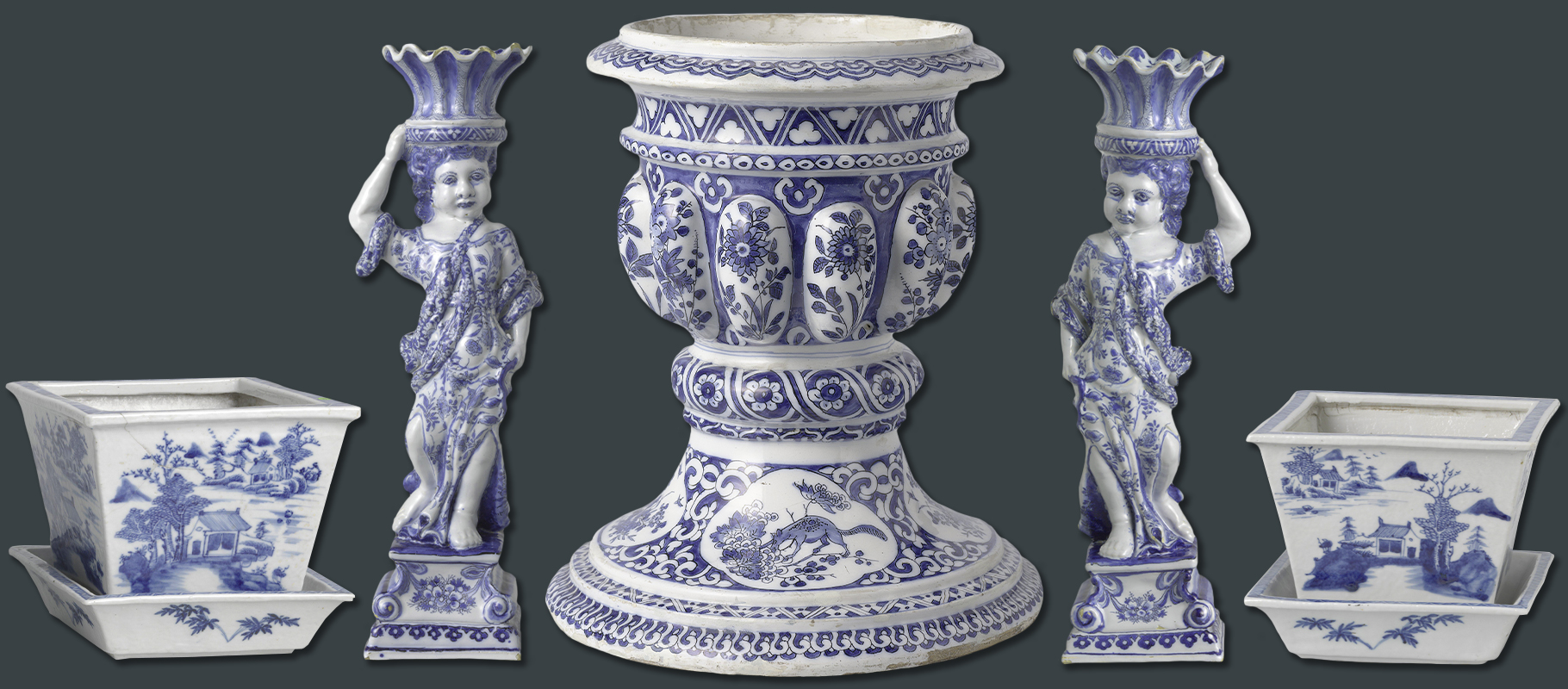 Above: a selection of Dutch and Chinese examples, including a late 17th century jardiniere (centre), 17th century Dutch flower holders, and 18th century Chinese jardinieres designed for the European market
Above: a selection of Dutch and Chinese examples, including a late 17th century jardiniere (centre), 17th century Dutch flower holders, and 18th century Chinese jardinieres designed for the European market




